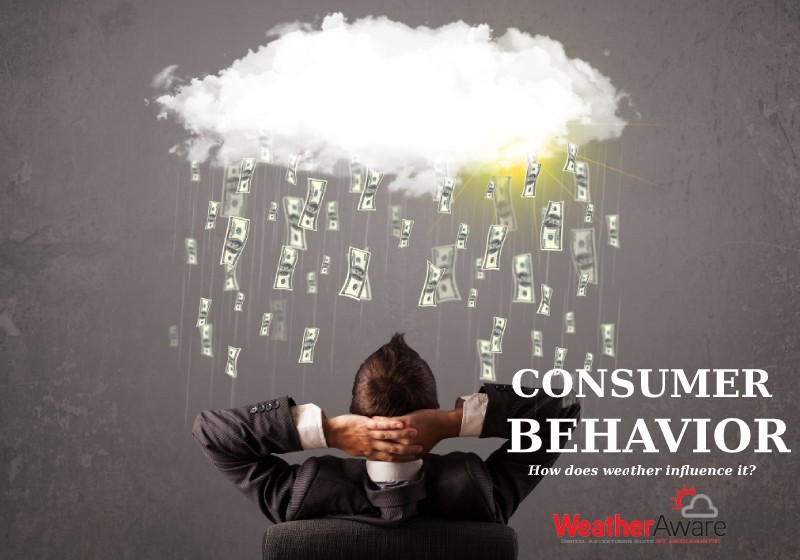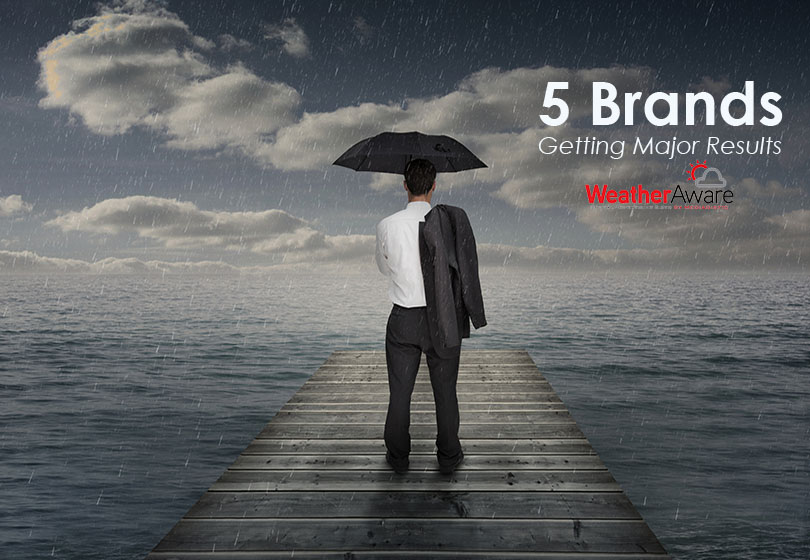
You might be surprised how significantly weather affects our behavior. Did you know, for example, that one French study found that women are 8 percent more likely to give a good-looking man their phone number on sunny days than cloudy days? How about another study done by the same scientist, Nicolas Guéguen, that found people are more prone to picking up hitchhikers on sunny days?
If weather can convince people to give out personal information and take a chance on a stranger in need, certainly it can influence consumer behavior in equally powerful ways. The correlation makes sense: Weather influences mood, mood influences buying behavior, and thus by the transitive property, weather can affect consumer behavior. Here’s a closer look at how and why the forecast can impact your bottom line.
Weather, Mood, and Consumption Patterns
Whether it’s sunshine, humidity, barometric pressure, temperature, rain, or snowfall, weather influences consumers’ moods. Light seems to play an especially critical role in weather’s mood-inducing properties by stimulating the production of serotonin — the neurotransmitter that helps regulate and elevate mood — in the brain. But what does that mean for spending?
Studies suggest that, the better their moods, the more likely consumers are to spend money and more of it when they do. In fact, a 2010 study conducted by Canadian researcher Kyle B. Murray found that exposure to sunlight correlated with higher levels of consumption and a higher dollar amount spent per item. His study discovered that, when exposed to sunlight, consumers were willing to pay 37 percent more for green tea and 56 percent more for a gym membership.
By contrast, in cloudy conditions, consumers are more likely to spend money on alcohol, tobacco products, and coffee. Murray theorizes that this behavior correlates with a general consumer desire to boost depressed moods.
Weather and Product Demand
Aside from its effect on mood, weather can also spur demand for certain products. For example, when temperatures hit about 65 degrees in the United Kingdom, grocery stores see a 22-percent increase in the sales of carbonated drinks and a 20-percent increase in juice sales. Conversely in the United States, just a one-degree drop in temperature can trigger increased sales of soup, oatmeal, and lip balm.
Weather and Buying Method
Inclement weather keeps people home and thus can hurt foot traffic and retail sales in brick-and-mortar stores. When it’s warm and sunny, brick-and-mortar retailers do better, but during bad weather, consumers turn to online retailers.
One study by RichRelevance found that cold or rainy days boost web traffic to clothing, home and furniture, and wholesale retailers by 12 percent compared to warm or sunny days. Curiously, though, cold and rainy days didn’t have any significant effect on traffic for big box retailers.
Rain or shine, one thing is clear — weather influences when, where, how, what, and why consumers buy. The forecast can mean the difference between a positive and negative mood, which can make all the difference in generating revenue for businesses.

